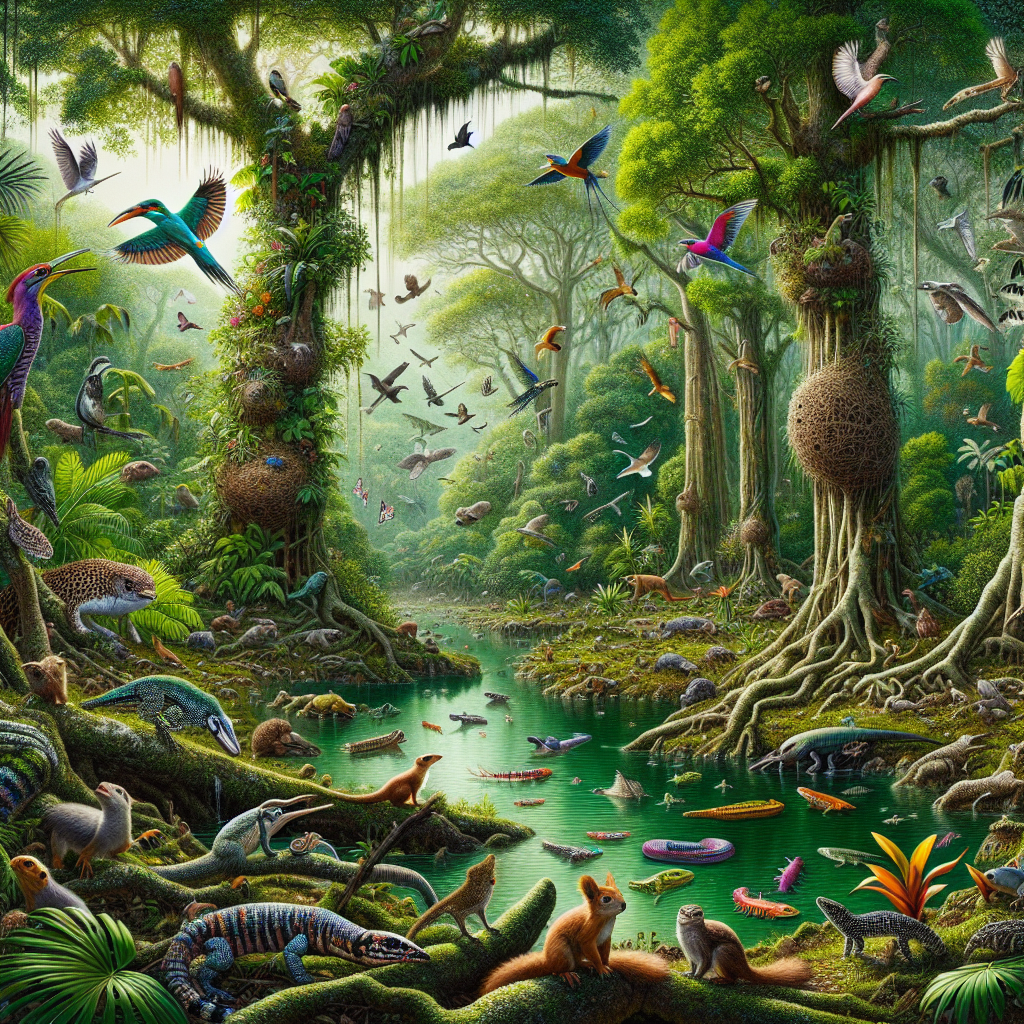The Specter of Extinction: Reviving the Past and the Challenges Ahead
As we stand at the crossroads of technological advancement and ecological reality, a tantalizing prospect beckons: the potential resurrection of extinct species. The thought of reanimating lost creatures like the woolly mammoth or the dire wolf sparks a blend of excitement and apprehension. Yet, as experts caution, this technological marvel should not overshadow the pressing concerns surrounding extinction itself.
The Allure of De-Extinction
The idea of de-extinction—the process of bringing back extinct species—captures the imagination of many. Advances in genetic engineering, particularly in CRISPR technology, have opened doors that were once deemed closed forever. The notion that we could see a woolly mammoth roaming the tundra again is intoxicating. This allure is rooted not just in nostalgia but also in the potential ecological roles these species could play.
However, as the original discussion posits, the mere existence of a genome does not equate to the viability of a species. A species is not merely a collection of genetic material; it is an intricate entity embedded in the ecosystems that support it. This complexity raises a critical question: Are we truly prepared to face the consequences of our scientific ambitions?
Ecosystems in Flux
Ecosystems are not static; they evolve and adapt based on various environmental factors. The challenges faced by extinct species today are not solely about genetic re-creation. They are about habitat loss, climate change, and the alteration of food webs that have occurred over millennia. For instance, while the woolly mammoth may be resurrected through genetic endeavors, the habitat it once roamed—boreal forests and grasslands—has dramatically shifted.
It is essential to realize that certain ecosystems that supported these species may no longer exist in a form conducive to their survival. A woolly mammoth, for example, would require vast expanses of land, a specific climate, and a suitable food supply, all of which have been significantly altered since its extinction. The success of de-extinction is thus dependent on recreating not just the species but also a conducive environment, which is a monumental task.
The Role of Biodiversity
Biodiversity plays an integral role in ecosystem health. Each species contributes to the balance of its environment, from the smallest microbe to the largest predator. The extinction of a species can trigger a domino effect, impacting countless others and leading to further loss. As we consider reviving extinct species, it is crucial to understand the implications of reintroducing them into contemporary ecosystems.
The woolly mammoth, for example, was not just a large herbivore; it was a keystone species that influenced the vegetation and nutrient cycles of its habitat. Bringing it back without considering the existing flora and fauna could disrupt current ecosystems. The idea of 'rewilding'—reintroducing extinct species—requires a comprehensive strategy that addresses the current ecological framework and the historical context of these species.
The Ethical Dimensions
The quest for de-extinction raises profound ethical questions. Is it right to play God with nature? We have a responsibility to ensure that our attempts at revival do not lead to further ecological imbalance or exacerbate existing environmental issues. The potential to bring back a species comes with the burden of responsibility.
Moreover, what does it mean for conservation efforts if resources are diverted toward de-extinction instead of protecting existing endangered species? The focus must remain on preserving the biodiversity we still have, rather than solely on resurrecting the past. Prioritizing current ecosystems and the species under threat is vital for maintaining ecological integrity.
The Path Ahead
The road to de-extinction is fraught with challenges, both scientific and moral. While the capability to resurrect lost species may soon become a reality, the implications of such actions demand thorough investigation. We must ask ourselves: Are we ready to handle the ecological responsibility that comes with bringing back lost species?
As we ponder the future of extinction and de-extinction, it is crystal clear that the solutions must be holistic and informed by ecological science. Our quest should not be solely about technological triumph but about fostering a sustainable coexistence with nature, ensuring that we do not merely revert to past mistakes but create a new paradigm for biodiversity conservation.
For those interested in diving deeper into the implications of de-extinction and its impact on ecosystems, the following resources offer valuable insights:
In navigating the landscape of extinction and revival, it is essential to recognize that while science may offer us the tools to bring back what was lost, it is our stewardship of the planet that will ultimately guide our path forward.
Related News
- Beyond Our Reality: A Stirring Odyssey Through Parallel Worlds
- The Genetic Tapestry of Human Evolution: Fire, Culture, and Co-evolution
- Unveiling the Enigma: The Future of Artificial Intelligence and the Quest for Universal Understanding
- The Mystery of Lost Civilizations: Debunking Pre-Ice Age Myths
- Navigating the Future with AI: A Delicate Balancing Act
